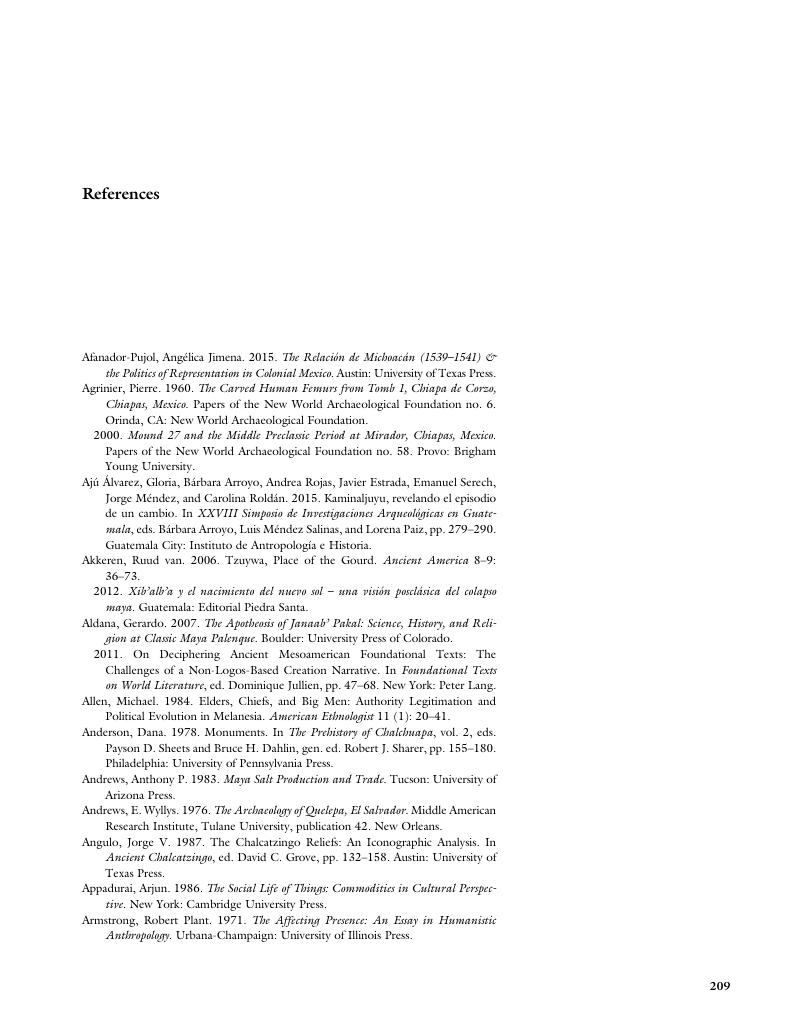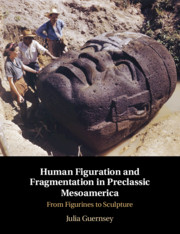Book contents
- Human Figuration and Fragmentation in Preclassic Mesoamerica
- Human Figuration and Fragmentation in Preclassic Mesoamerica
- Copyright page
- Dedication
- Contents
- Preface
- Acknowledgments
- 1 Preclassic Figuration
- 2 Monumental Sculpture and the Human Form during the Early and Middle Preclassic Periods
- 3 Early and Middle Preclassic Figuration in Clay
- 4 Figurines at Middle Preclassic La Blanca
- 5 Figurines, Fragmentation, and Social Ties
- 6 Changing Discourses of Human Representation in Late Preclassic Mesoamerica
- 7 High Culture and Human Representation in Late Preclassic Mesoamerica
- Epilogue
- Notes
- References
- Index
- References
References
Published online by Cambridge University Press: 24 February 2020
- Human Figuration and Fragmentation in Preclassic Mesoamerica
- Human Figuration and Fragmentation in Preclassic Mesoamerica
- Copyright page
- Dedication
- Contents
- Preface
- Acknowledgments
- 1 Preclassic Figuration
- 2 Monumental Sculpture and the Human Form during the Early and Middle Preclassic Periods
- 3 Early and Middle Preclassic Figuration in Clay
- 4 Figurines at Middle Preclassic La Blanca
- 5 Figurines, Fragmentation, and Social Ties
- 6 Changing Discourses of Human Representation in Late Preclassic Mesoamerica
- 7 High Culture and Human Representation in Late Preclassic Mesoamerica
- Epilogue
- Notes
- References
- Index
- References
Summary

- Type
- Chapter
- Information
- Human Figuration and Fragmentation in Preclassic MesoamericaFrom Figurines to Sculpture, pp. 209 - 258Publisher: Cambridge University PressPrint publication year: 2020



